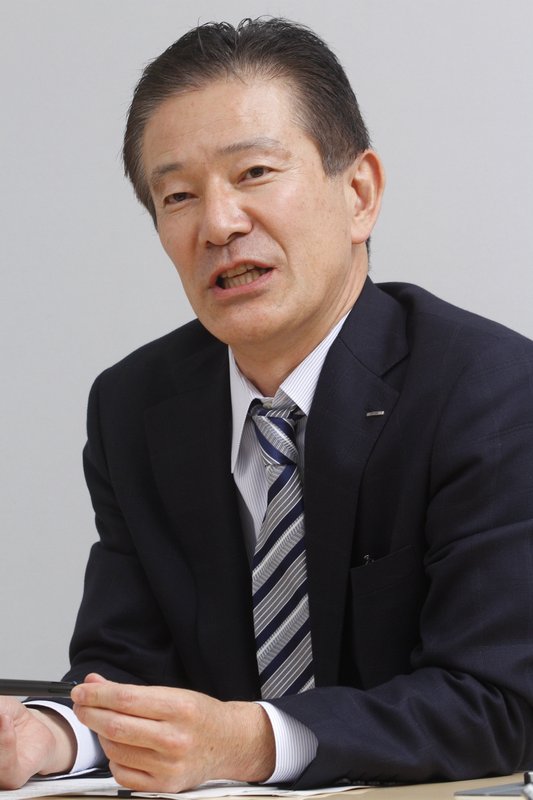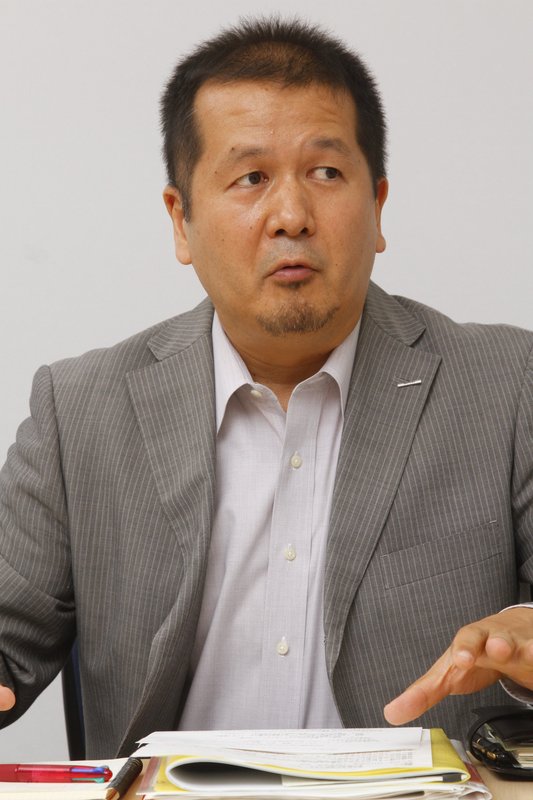The proliferation of smart devices like smartphones and tablet PCs is causing a tectonic shift in the advertising communication business. Ritsuya Oku, Senior Researcher at DENTSU SOKEN INC., who conducts R&D from business, audience, and technology perspectives, and Yuji Uemura, Deputy General Manager of Dentsu Digital Inc. Business Bureau, who is well-versed in both mass media and internet operations, discussed the future outlook and challenges for media over four sessions.
We need a communication mechanism that spreads laterally
Oku: Until now, the challenge in integrating mass media and online media has been how mass media can use the internet to enhance interactivity. But today, it's internet users themselves who are fully leveraging interactivity. For example, people who watch a TV broadcast and think, "That's interesting," can connect with each other on social media. In this environment, the question for media is how to design communication that links with the internet, using information dissemination as a trigger.
Uemura: When mass media topics spread across social media, it doesn't just expand reach; the topics cluster and gain concentration in each respective space. This should make it easier to operate as an advertising medium, right?
Oku: However, while topics from the four major mass media outlets are easy triggers, they require audience engagement. Viewers develop deeper interests and share them. Ideally, the media's subsequent responses should be customized for each individual, but achieving that level of responsiveness is challenging.
Uemura: Sometimes, what viewers spontaneously compile on social media is more interesting than the sites or topics prepared by broadcasters. Moreover, since this creates a positive rather than negative flow, I feel it might be acceptable to leave things largely up to the users.

Oku: But advertising inherently requires conveying a message, so it can't be completely detached. The challenge is that if clients make the advertising too obvious, it ceases to be communication. Even with corporate blogs, if the personality of the employee in charge becomes prominent, it can gain popularity. However, if that employee leaves due to a personnel transfer, users might abandon the blog.
Uemura: Even when a corporation disseminates information, it won't gain support without a distinct corporate personality. We've truly entered an era where building a corporate persona is crucial.
Oku: How will mass media, which carries the weight of journalism, and online media like SNS, which excels at communication, overlap? Or will they divide their roles? I get the impression broadcasters are moving forward while exploring various possibilities.
Uemura: Currently, both broadcasters and clients create separate sites or apps for each program or product category. But from the consumer's perspective, all programs and products are interconnected. People want to follow their favorite talent across networks and shows, and compare products across manufacturers. Yet content creators inevitably remain siloed. I wonder if we could develop platforms or systems to facilitate this horizontal diffusion.
Oku: Such a system would allow users to access diverse information, potentially creating a virtuous cycle where they want to engage with more content. It would combine the best of both worlds: the mass media's role as a meeting place for viewers/readers and information, and the internet's ability to deepen understanding when users seek more details. I believe creating such a system will become increasingly essential in the coming years.
Reaching unique domains and users

Uemura: The strength of social media is that if people find content or information from broadcasters or Media Services / Newspaper Division interesting, they can easily quote it and spread it on Facebook or Twitter. For TV, it means connections like "This drama is great!" forming. And it spreads in real time via smartphones during the broadcast. That feeds back into ratings. Essentially, the buzz generated returns to the broadcaster's advertising business. But with newspapers, if an incident happens and people visit the site, that's often where it ends. It doesn't contribute to circulation or readership, which are core to a newspaper's advertising business. That's a problem both newspapers and we need to address.
Oku: As the audience reaching both TV and the internet grows, so will the segments that only watch TV or only browse the internet. That's why I think reaching TV-only and internet-only audiences will become an increasingly important trend going forward. Uemura-san, you're well-versed in the situation overseas. What's the reality like there?
Uemura: Regarding the integration and collaboration between TV and the internet, the US isn't doing particularly well right now either. I sense a distance between the online media industry—Facebook, Twitter, Google—and the broadcasting industry. There's also little talent shuffling between them. Ultimately, third parties are currently connecting the two independently. Over there, there are hardly any agencies committed to both broadcast programming and production on one side, and enhancing the media value and functionality of Facebook or Twitter on the other. That's why inquiries about how to facilitate this collaboration come to us from the media side.
Oku: I see. So there's a need to bridge both sides.
[ To be continued ]






